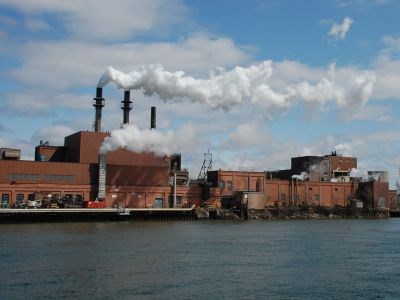A biomass energy plant, offices, residential developments: they’re all options being considered by the new owners of the former St. Marys Paper property in Sault Ste. Marie.
But it will be early spring 2013 before any redevelopment takes place on the site.
In May, Riversedge Development Inc., an industrial property developer based out of Woodstock, was named as a purchaser of the 38-acre property, which was home to St. Marys Paper mill for more than 100 years before the facility went into receivership Dec. 29.
Willem Galle, a principal with Riversedge, said over the course of the summer and fall, the company would undertake consultations with the city, the Sault Ste. Marie Economic Development Corporation and key community stakeholders to determine the best use for the site.
Riversedge will consider a range of feasible options with the intention of creating an integrated plan for the area, he added.
“We are going through a summer of investigations where we are evaluating the various possibilities or combination of possibilities that would suit the site,” Galle said. “The issue is that it has been a paper mill for over 100 years and, really, nobody in the area has thought about it in any other way.
So it varies between investment purposes for bio-industry and offices, institutional offices and even residential, as in condos and townhouses.”
Decommissioning has already begun at the site, including preparing the papermaking equipment for a June 20 simultaneous live and online auction being hosted by auction house Hilco Industrial.
Galle noted that, while the old production buildings will be taken down, a process expected to last into the new year, the original stone buildings will remain as “monuments in the context of Sault Ste. Marie’s history,” and will be integrated into any new development. But first, an evaluation of the buildings has to be undertaken to establish their structural integrity and soundness so developers can determine what role they can play.
A biomass energy facility hasn’t been ruled out, but Galle is skeptical that it would be the best option for the site.
In November 2010, the province approved St. Marys Renewable Energy Corp., a subsidiary of the paper mill, for a 10-year power purchase agreement that would see Ontario Power Authority purchase energy generated through the corporation’s proposed $175-million, 35 MW biomass cogeneration plant. The plant was never built.
Galle said the city currently produces enough energy for its own use and, unless there are upgrades to the distribution grid—an expensive proposition—producing energy to sell to other municipalities might not be a feasible option.
“While the paper mill was there it was a different discussion because then a 35 MW power plant really takes care of the 50 MW that the (paper) plant uses anyhow,” Galle said. “So there’s a big difference between having a 35 MW biomass plant to basically feed a paper mill, versus just doing a 35 MW power plant with no paper mill to serve.”
Following the decommissioning of the site, Galle acknowledged there would be a need for a comprehensive remediation of the property, and said contractors would be brought in to do the work.
Riversedge will remain the site’s lead developer, but the company will need to look for investors who want to partner on the project, he added.
Galle noted the site has been significant to Sault Ste. Marie and its history, in particular, the island and bridge area, which remains the heart of the city.
But any development on the former mill property will herald “a new era for the site,” he said.
“I think that particular area defines a good deal of the city from a heritage and from a view perspective,” he said. “I think that’s relevant and that’s why it’s better to take some time now and have dialogues rather than start saying it’s going to be this or that.”




